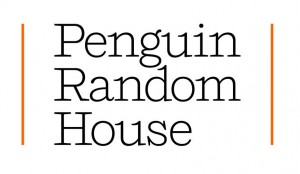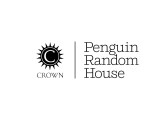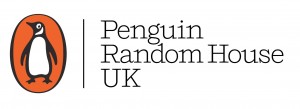The quest for a new Penguin Random House logo and brand identity has led not to one mark, but to 250. Neither the
 penguin nor the house logo won this contest; in fact, both have been left aside in favor of a single “wordmark” proclaiming “Penguin Random House” in type only. (The distinctive Penguin orange does live on as stripes alongside the words, and in some backgrounds.) The “corporate wordmark” is designed to live in harmony alongside all of the company’s existing 250 imprint and divisional logos and trademarks in a “brand system” that works for PRH units around the world.
penguin nor the house logo won this contest; in fact, both have been left aside in favor of a single “wordmark” proclaiming “Penguin Random House” in type only. (The distinctive Penguin orange does live on as stripes alongside the words, and in some backgrounds.) The “corporate wordmark” is designed to live in harmony alongside all of the company’s existing 250 imprint and divisional logos and trademarks in a “brand system” that works for PRH units around the world.
CEO Markus Dohle acknowledges in an internal video for staff that accompanied the brand launch the enduring curiosity around how the new mark would look: “When I did the Town Hall in July [2013], it was the most asked question around the world: ‘What is the new company going to look like?’ And behind that question, I think, is, ‘What is the company going to feel like, for us?'”
 Perhaps like many other people seeing the new look for the first time, Dohle admits in the video, “When I saw the wordmark for the first time, it thought to myself, that’s very subtle. It’s humble. It’s sort of modest. But is that enough, for all our constituents? Is it enough for our employees? Is it enough for our authors and agents?”
Perhaps like many other people seeing the new look for the first time, Dohle admits in the video, “When I saw the wordmark for the first time, it thought to myself, that’s very subtle. It’s humble. It’s sort of modest. But is that enough, for all our constituents? Is it enough for our employees? Is it enough for our authors and agents?”
He adds, “And the more I thought about it the more I realized that, it’s really fitting because we, as Penguin Random House, we are the merchants of words.” The new system was developed along with design agency Pentagram, and the firm’s Michael Beirut appears alongside Dohle in the company video.
“We first wanted to create a brand narrative,” Dohle says in the video. “We wanted to define our company’s story” and “we tried to involve as many stakeholders as possible” in that process. In the official release, Dohle explains: “Presenting our new Penguin Random House wordmark side by side with each of our publishing imprint and brand symbols powerfully communicates what makes our company so special: our collective expertise and global scale coupled with our local publishing teams giving diverse and important voices a platform and audience. This fundamental understanding of our heritage and of the company we are building together for the future informs the design of the brand identity, and how we will visually represent who we are.”
 The company notes that “the imprints and brand symbols also can continue to stand alone without the brand-system pairing – for example, on the spines of books.” The new identity will have a “gradual rollout” going forward across the company’s units and international divisions. At the Penguin Random House UK division, the Penguin symbol lives on, to the left of the words, as shown here.
The company notes that “the imprints and brand symbols also can continue to stand alone without the brand-system pairing – for example, on the spines of books.” The new identity will have a “gradual rollout” going forward across the company’s units and international divisions. At the Penguin Random House UK division, the Penguin symbol lives on, to the left of the words, as shown here.